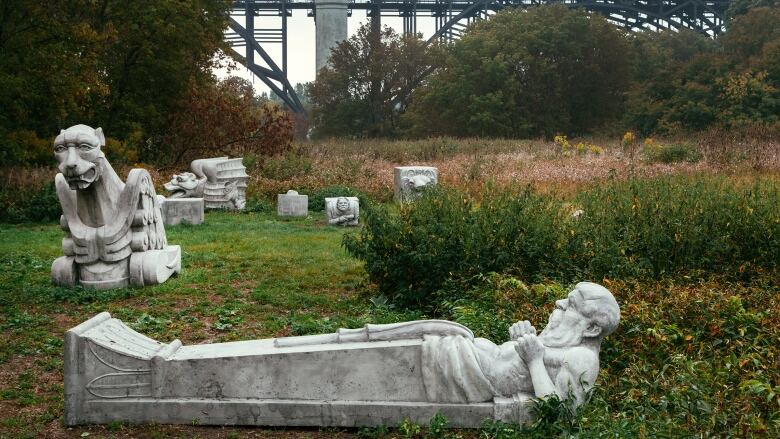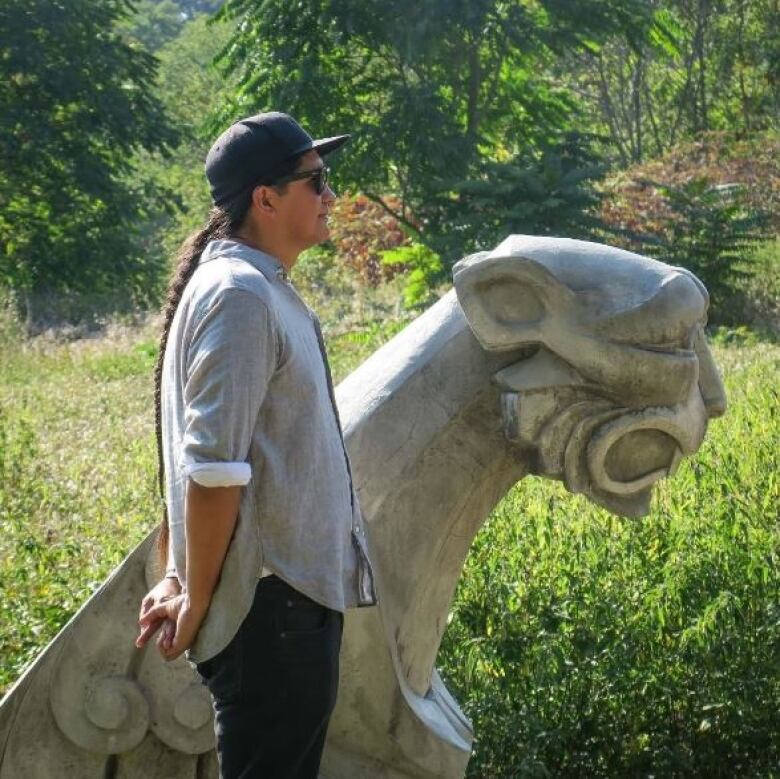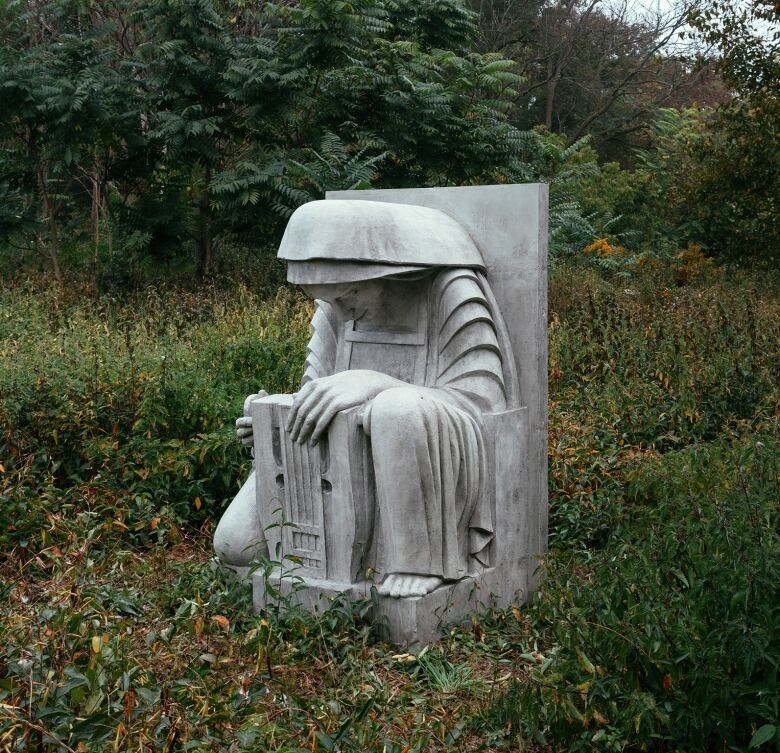Indigenous artist's 'monsters' link past and present in Don River Valley Park
New art installation highlights changes to the land

Giant stone figures, replicas from some of Toronto's landmarks, lay scattered throughout the Don River Valley Park as part of a new art project calling attention to the area's industrial and Indigenous history.
Duane Linklater, an Omaskeko Cree from the Moose Cree First Nation near North Bay, Ont., arranged 14 concrete cast sculptures modelled after the gargoyles and grotesques that adorn someof the city's most recognizablemunicipal buildings, academic institutions and churches.
These "monsters" were originally built from materials made at Don Valley Brick Works a reality Linklatersays became the basis for his installation.
"The project began by thinking about the Brick Works facility itself," Linklatertold CBC Toronto.

"This for me is an important idea to think about being an Indigenous person from Treaty 9. Resource extraction is always present in the minds of the people in the North."
The Don River Valley Park now masks the former quarry and industrial site that operated for nearly a century, until the city's clay deposits were mostly used up.
Linklaternoted the Don River, snaking along the nearby highway and rail corridor, has been straightened twice in the past century.
Kari Cwynar, the art program's curator, notesLinklater's approach draws attention to the city's indifference to the Don River's industrial history.
"Hecreated a loop from the land and the resources in the Don, the relationship to the city of Toronto, and then closing that loop by bringing these gargoyles and grotesques back to the Don," she explained.
"Laying them almost in passive positions in the field as a series of ruins and trying to call attention to that relationship."

'Stories that are often hidden'
Over the last three years, the pair walked the Lower Don Trail in the meadow north of theBloorViaduct where the figures will reside until 2022contemplating its transformation.
"He's an artist who thinks deeply about land and the politics of land," said Cwynar.
"He looks at the stories that are often hidden and they're not made visible in the narratives of cities and institutions."
The installation, Monsters for Beauty, Permanence and Individuality,opened on Sept. 23.
Linklaterexplainedit's important to him for the forms to remainanonymous, so people will take thetime to have a look and contemplate the different meaningsembedded in the figures.
"I hope Torontonians will stop and think about the landscape that they're in," Cwynaradded.












_(720p).jpg)


 OFFICIAL HD MUSIC VIDEO.jpg)
.jpg)



























































































